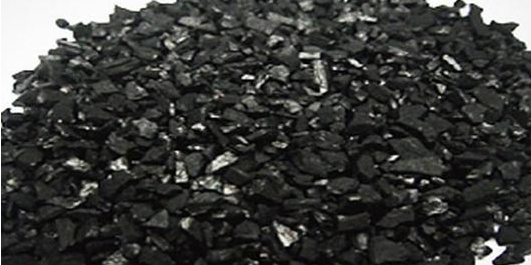What is the role of adsorption of activated carbon in wastewater treatment?
Activated carbon adsorption can remove the trace pollutants that are difficult to be removed by general biochemical treatment and physicochemical treatment units. It can not only deodorize, decolorize and remove trace elements (such as heavy metals), residual chlorine and radioactive pollutants, but also absorb many types of organic substances, such as high molecular hydrocarbons, halogenated hydrocarbons, chlorinated aromatic hydrocarbons, polycyclic aromatic hydrocarbons, phenols, benzene, insecticides and surfaces Work, rust remover, etc.
There are two types of activated carbon: granular and powdery. Powdered activated carbon is often used in combination with coagulant, and is added to flocculation unit or aeration tank to form a new biological activated carbon process. Granular carbon is often packed in containers and used as filter material. Granular carbon is often used in advanced treatment of sewage.
1. Active carbon adsorption tower

design calculation
(1) The design parameters are usually determined by activated carbon adsorption experiments. The following parameters can be referred to in the design of filter bed adsorption device
① Contact time the contact time of activated carbon and sewage is determined according to the requirements of treated water quality and the frequency of activated carbon regeneration. When the COD of effluent is 10-20mg / L, the contact time is 20-30min; when the COD of effluent is 5-10mg / L, the contact time is 30-50min.
② The filtration rate is generally controlled at 6-15m / h.
③ The volume velocity of fixed bed is less than 2m / (MH) and that of moving bed is less than 5m / (MH); linearity: fixed bed is 2.0-10.0m/h and moving bed is 10.0-30.0m/h.

④ The diameter of the tower is 1.0-3.5m; the thickness of the carbon layer is generally 4-8M, and the thickness of the single column carbon layer is generally 12-2.4m. Most of the beds are in series operation, and they are washed and regenerated in sequence during operation; the number of a group of series beds is generally no more than 4, and the number of parallel groups is no less than 2.
⑤ There are two kinds of contact adsorption tower: up flow and down flow. There are two types of upward flow: flow bed and fixed bed, and two types of downward flow: pressure type and gravity type.
⑥ The backwashing is similar to the fast filter, with the working cycle ≤ 12h, the backwashing time generally 5-10min, and the washing strength of 30m / (㎡ h).
(2) Design considerations
① Active carbon has strong adsorption capacity for cyclic and unsaturated compounds with molecular weight below 1500 and straight chain compounds (sugars) with molecular weight over thousands, with good effect. Therefore, before the adsorption of activated carbon, ozone oxidation unit is added to oxidize and decompose macromolecular organics into micromolecular organics, which is conducive to improving the adsorption effect and treatment capacity of activated carbon
② In the adsorption tower, some organics are decomposed by microorganisms due to the survival of microorganisms, which can significantly improve the removal function of dissolved organics.
③ In order to prevent the activated carbon layer from being blocked by suspended solids and producing anaerobic gas, it is necessary to carry out some pretreatment, such as warm coagulation, clarification, filtration, etc., so as to reduce the SS and BOD values in the raw water as much as possible, or take measures to strengthen backwashing and increase the DO value of the raw water.





